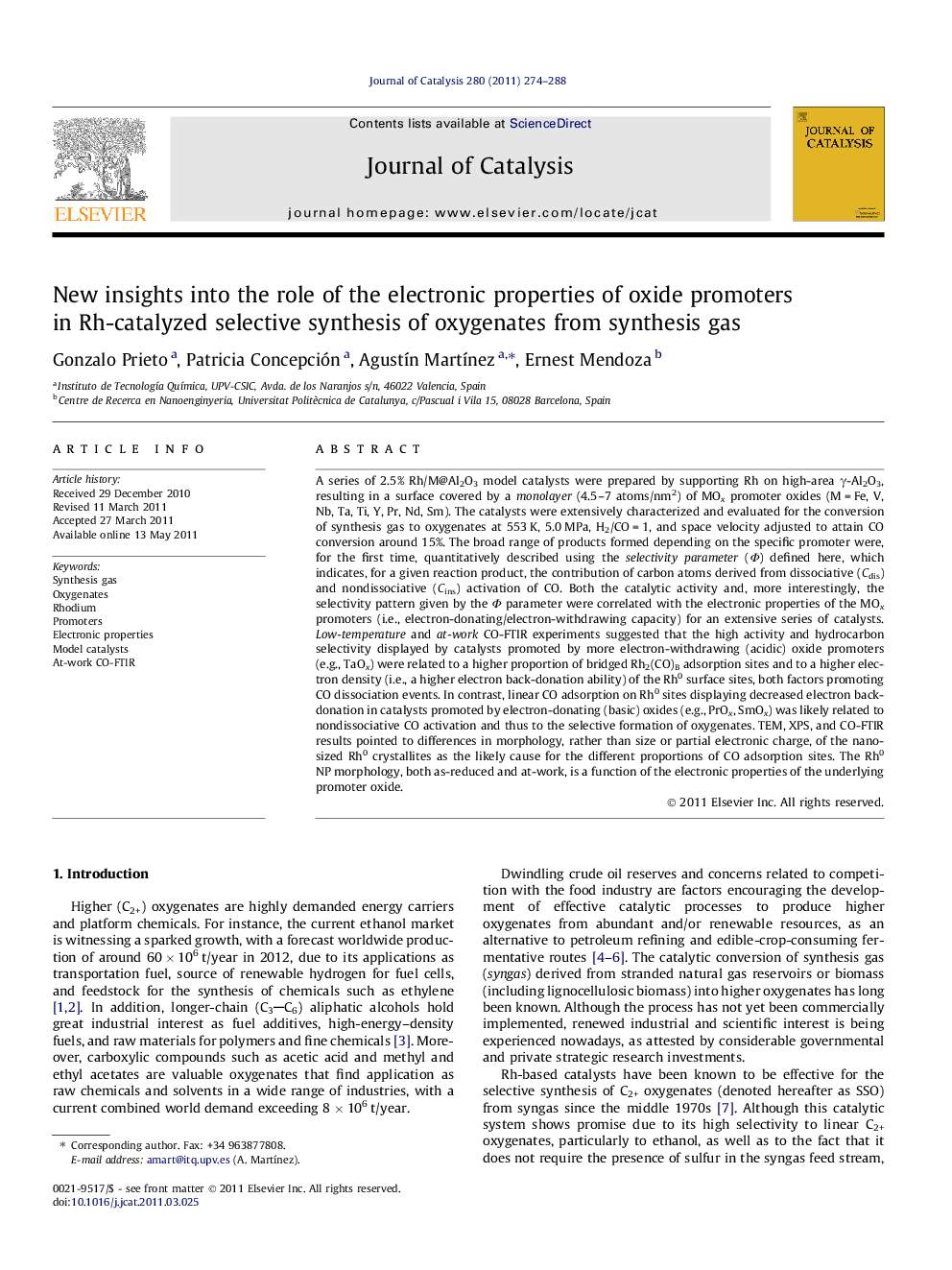| کد مقاله | کد نشریه | سال انتشار | مقاله انگلیسی | نسخه تمام متن |
|---|---|---|---|---|
| 61552 | 47587 | 2011 | 15 صفحه PDF | دانلود رایگان |

A series of 2.5% Rh/M@Al2O3 model catalysts were prepared by supporting Rh on high-area γ-Al2O3, resulting in a surface covered by a monolayer (4.5–7 atoms/nm2) of MOx promoter oxides (M = Fe, V, Nb, Ta, Ti, Y, Pr, Nd, Sm). The catalysts were extensively characterized and evaluated for the conversion of synthesis gas to oxygenates at 553 K, 5.0 MPa, H2/CO = 1, and space velocity adjusted to attain CO conversion around 15%. The broad range of products formed depending on the specific promoter were, for the first time, quantitatively described using the selectivity parameter (Φ) defined here, which indicates, for a given reaction product, the contribution of carbon atoms derived from dissociative (Cdis) and nondissociative (Cins) activation of CO. Both the catalytic activity and, more interestingly, the selectivity pattern given by the Φ parameter were correlated with the electronic properties of the MOx promoters (i.e., electron-donating/electron-withdrawing capacity) for an extensive series of catalysts. Low-temperature and at-work CO-FTIR experiments suggested that the high activity and hydrocarbon selectivity displayed by catalysts promoted by more electron-withdrawing (acidic) oxide promoters (e.g., TaOx) were related to a higher proportion of bridged Rh2(CO)B adsorption sites and to a higher electron density (i.e., a higher electron back-donation ability) of the Rh0 surface sites, both factors promoting CO dissociation events. In contrast, linear CO adsorption on Rh0 sites displaying decreased electron back-donation in catalysts promoted by electron-donating (basic) oxides (e.g., PrOx, SmOx) was likely related to nondissociative CO activation and thus to the selective formation of oxygenates. TEM, XPS, and CO-FTIR results pointed to differences in morphology, rather than size or partial electronic charge, of the nanosized Rh0 crystallites as the likely cause for the different proportions of CO adsorption sites. The Rh0 NP morphology, both as-reduced and at-work, is a function of the electronic properties of the underlying promoter oxide.
As ascertained using highly dispersed model Rh/M@Al2O3 catalysts, the selectivity pattern in the synthesis of oxygenates from synthesis gas is dictated by the electron-withdrawing/donating power (Lewis acidity/basicity) of the underlying metal oxide promoter.Figure optionsDownload high-quality image (110 K)Download as PowerPoint slideHighlights
► Study of promotion effects without overlap of metal nanoparticle size effects.
► The broad selectivity pattern is modeled by a single parameter, pondering the presence of carbon atoms derived from CO dissociation or insertion.
► Differences in the CO adsorption modes and electron back-donation are related to the different CO activation pathways.
Journal: Journal of Catalysis - Volume 280, Issue 2, 13 June 2011, Pages 274–288